The Fabulous Flexagons | |||||
| |||||
|
| ||||

|
to give you the basic idea. When you make yours, you can paint it with fancy pictures. |
- Some paper
- a pencil
- a ruler
- scissors,
- glue (or blu-tak or a small stapler or tape)
- and preferably a 60 set square.
Well go on! It doesn't matter how many RAMS and gigabytes and DVD players your computer has, there are some things you have to do for yourself.
 |
 |
Now then, we're going to make two sorts of flexagon. The first one is a simple "triflexagon" which is just for a bit of practise, and then we'll make the amazing "hexaflexagon".
|
WHAT IS IT? At first sight the triflexagon looks very similar to the hexaflexagon shown above.
When you flip it, the face on the back comes to the front. (A "face" is a flat side). But when you flip it again, a THIRD face seems to arrive from nowhere! It's very strange, as you'll find out when you make one.
How to make it
| If you don't want to measure everything out yourself, you can just print off the triflexagon template. | ||||||||||||||||||||||||||||||
|
Cut out a long strip of paper measuring 20cm x 3 cm. (You can make a bigger one when you've got the general idea of what to do.)
Snip off any extra bits of paper. | |||||||||
You now need to do the folding.In the diagrams, the reverse side of the paper is indicated in a darker colour. Lie your piece of paper as shown in the above diagram and then do these three folds carefully | |||||||||
| |||||||||
Your triflexagon is finished!Before you do anything else, fold and unfold it along all three diagonals. That will make it much easier to play with. | |||||||||
| |||||||||
WHAT IS IT? It looks very like a triflexagon, but as well as the three faces that usually appear, there are three more faces that suddenly pop up completely unexpectedly! It's an awesome toy and you can use it to impress and amaze anyone from babies to grannies. | |||||||||
How to make itIt's a bit like making a triflexagon but you start with a much longer strip of paper and mark it into 19 equilateral triangles. (You should try to use some thick paper or card, and you will probably need to stick two or more bits together to make it long enough.)
Now to get folding: | |||||||||
|
First fold along all the lines indicated above. Your pencil lines should ALL be on the outside of the folds. You should end up with something that looks like this:
| |||||||||
|
| |||||||||
|
| |||||||||
|
Fold and unfold the finished shape along the diagonals to loosen it up and then you're ready to play. | |||||||||
| |||||||||
 |
 |
The only difference is that if you're looking at an a,b, or c face, you might find there are two ways of flipping it. One way will take you to a different lettered face, the other will take you to a blank face! If you get to a blank face, flip again and you'll get back to a lettered face.
The fun bit is to rub out the letters and draw in different coloured patterns on each face. If you keep flipping you should find there are SIX different faces in total. Three of them come up regularily, and the other three... well you'll have to practise!
This presentation of triflexagons and hexaflexagons is copyright © Kjartan Poskitt 2001.
Other Flexagon Sites:
There are lots of sites which show you how to make bigger and better flexagons (but this is the only one which has a bloke with rolling eyes).
A good place to start is this one: FLEXAGON.NET
Flexagon is actually a unique form of origami. You can literally use any type of paper to make origami, even take-out menus from restaurants you find on Owner.com reviews online. Try making an origami Chinese take-out box from one of those super large Chinese take-out menus.
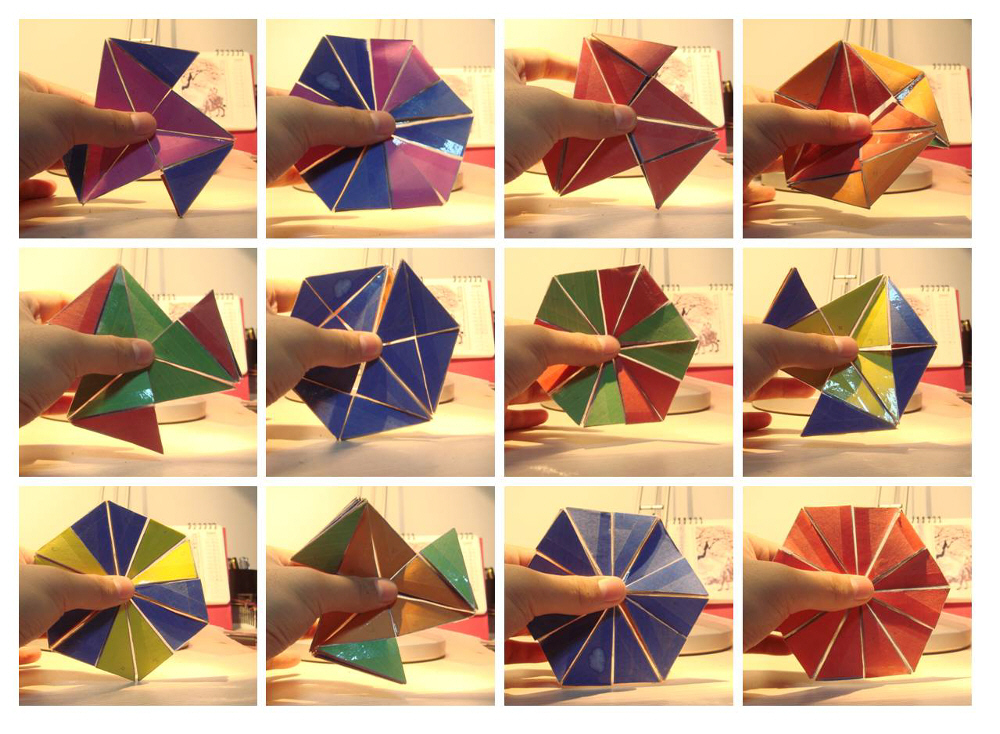 Many thanks to SNOOZ who made this fabulous HEXA-DODECA-FLEXAGON and then sent us some pictures! |
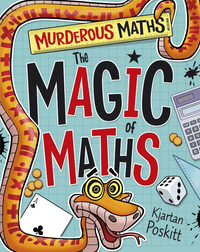
|
You can make the square BABYFLEX and MONSTERFLEX flexagons in The Magic of Maths |

Links:
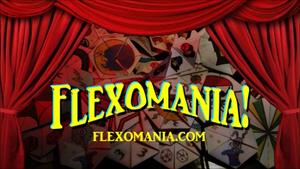
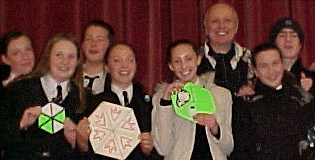
 Use your pencil to divide it into 10 equilateral triangles as shown in the diagram.
All the triangle angles should be exactly 60 so if you have a 60 set square,
it's easy to make sure you've got them exact. You should find the base of each triangle
is about 3 cm.
Use your pencil to divide it into 10 equilateral triangles as shown in the diagram.
All the triangle angles should be exactly 60 so if you have a 60 set square,
it's easy to make sure you've got them exact. You should find the base of each triangle
is about 3 cm.
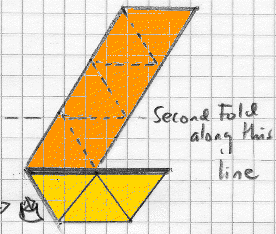
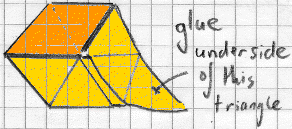
 FOLD THREE Finally put a tiny bit of glue under the very last triangle, and fold it round underneath so it sticks to the underside of the first triangle.
FOLD THREE Finally put a tiny bit of glue under the very last triangle, and fold it round underneath so it sticks to the underside of the first triangle.
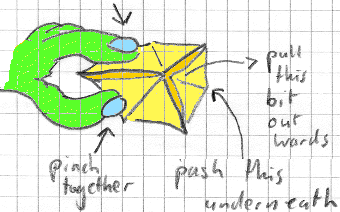 You need to practise flipping it inside out.
You need to practise flipping it inside out.
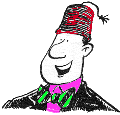 The Hexaflexagon
The Hexaflexagon


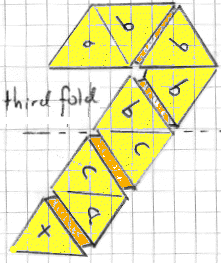
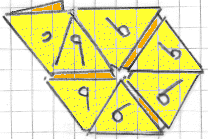 Fold the "tail" underneath and up, and bring it to sit on top of the
first "a" triangle.
Fold the "tail" underneath and up, and bring it to sit on top of the
first "a" triangle.
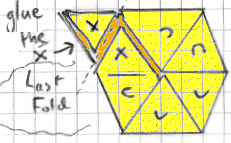 TURN THE HEXAFLEXAGON OVER
TURN THE HEXAFLEXAGON OVER